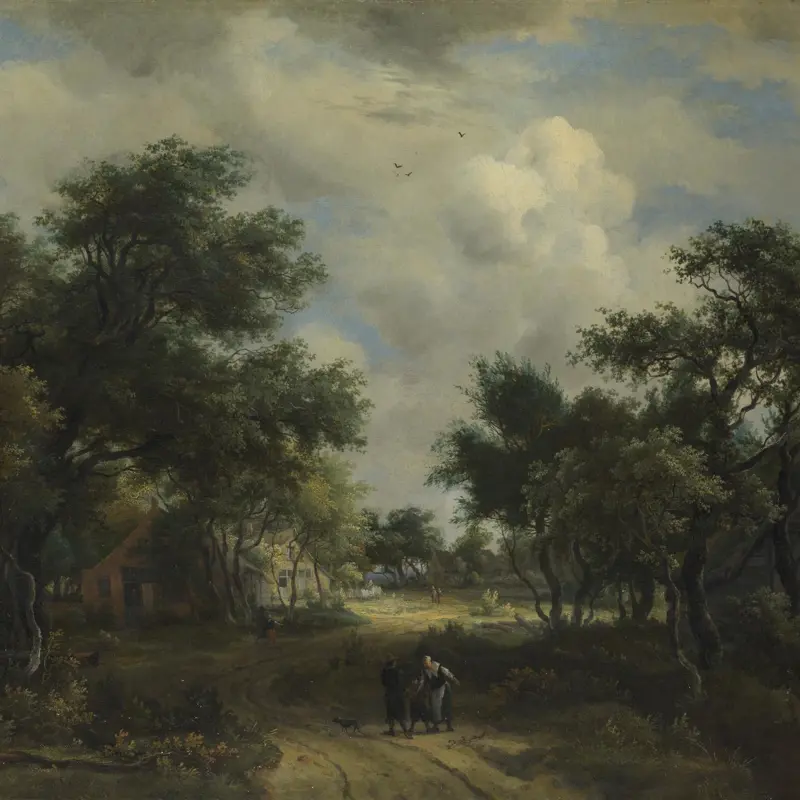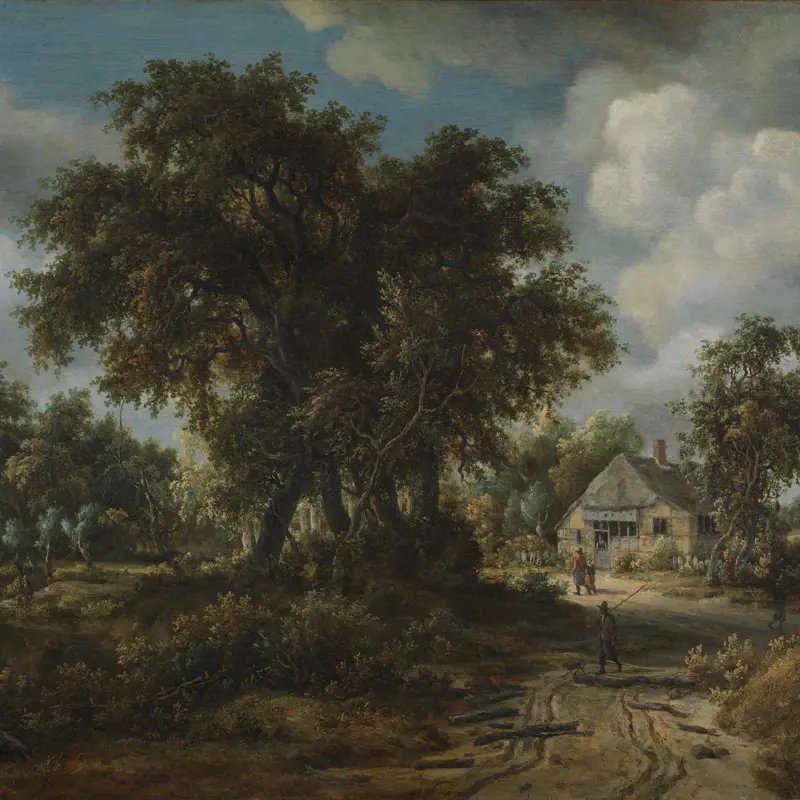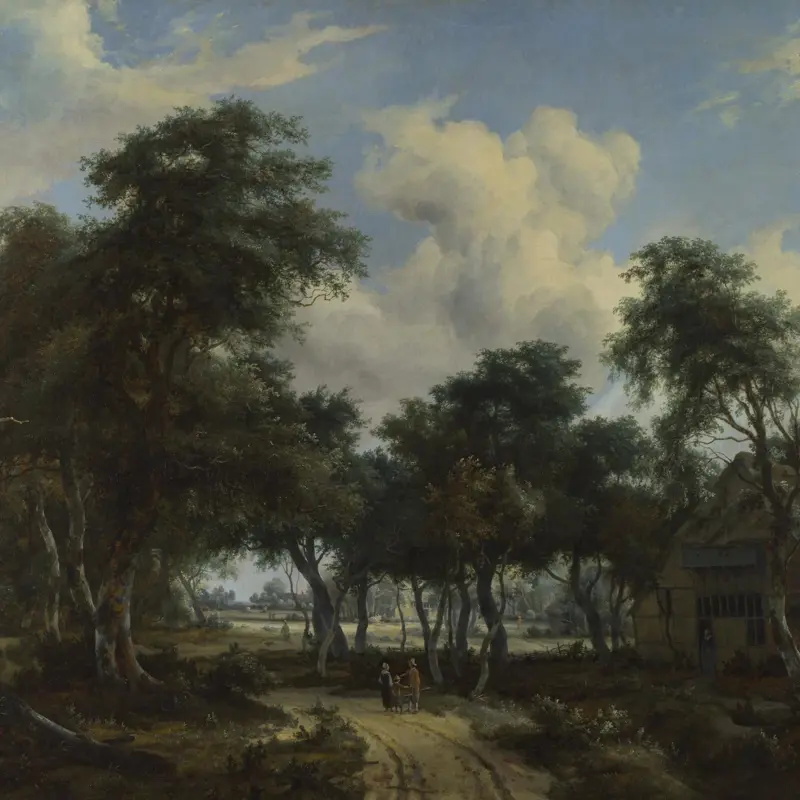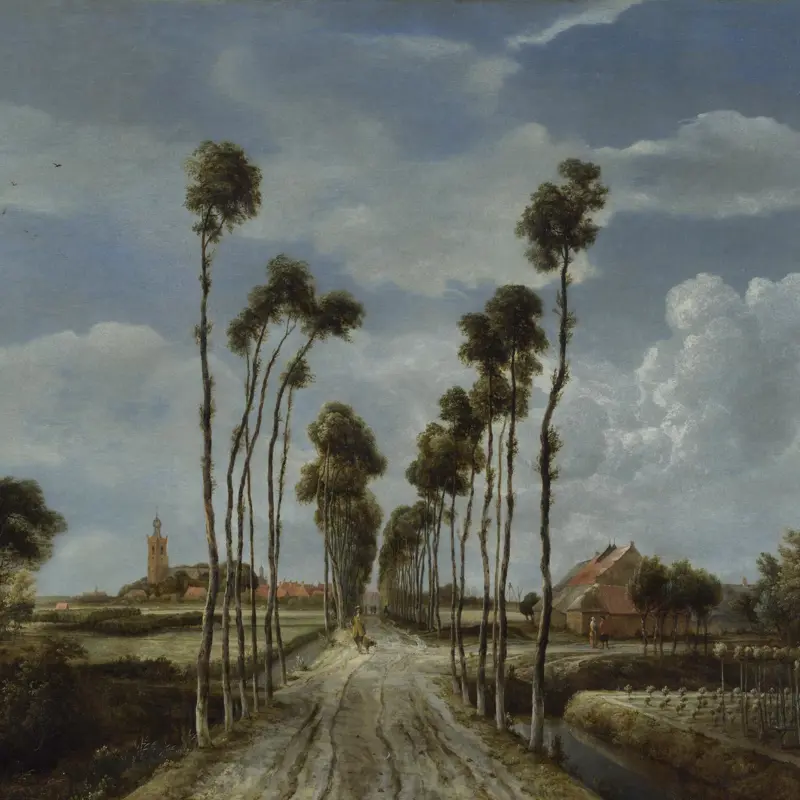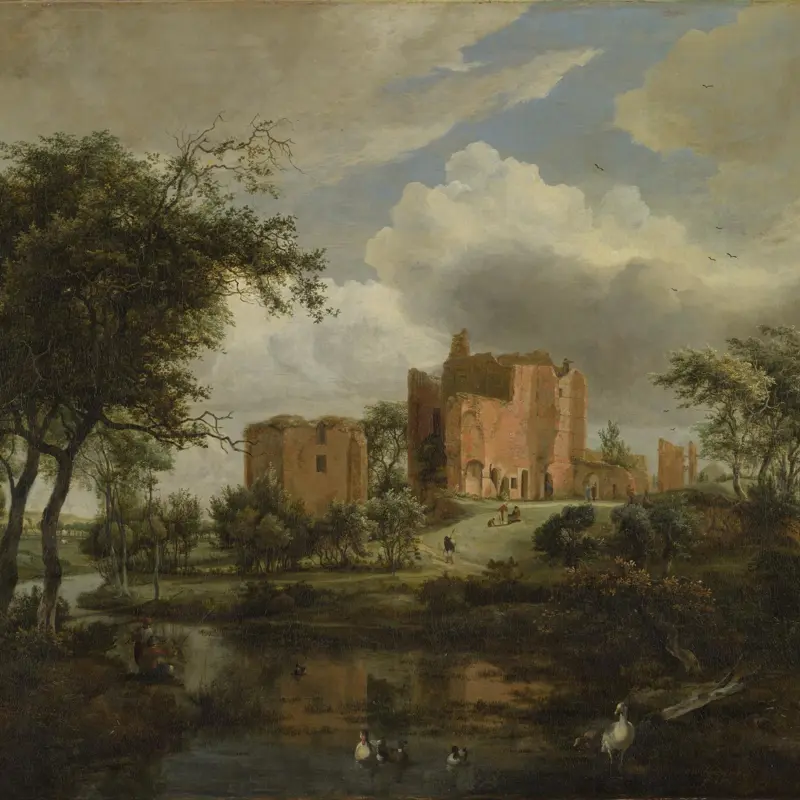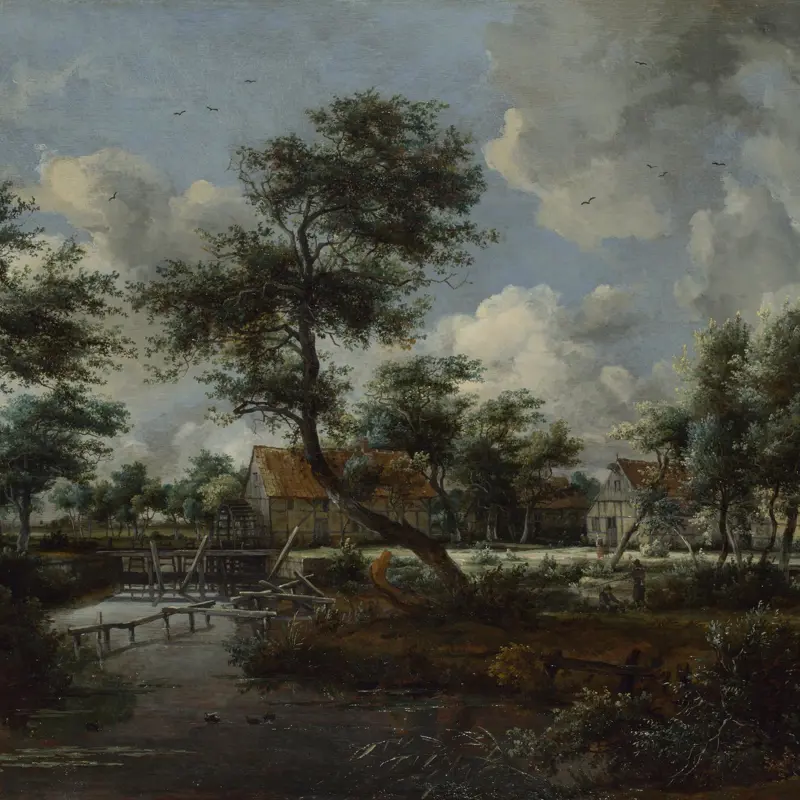Meindert Hobbema, 'The Haarlem Lock, Amsterdam', about 1663-5
About the work
Overview
Hobbema was a specialist landscape painter – this is his only known city view, a depiction of the ordered and harmonious relationship between people and water. We are looking towards the Haarlem Lock at the point where two of Amsterdam’s most important waterways meet – the Singel on the right and the Brouwersgracht in the immediate foreground. Hobbema seems to have chosen this view to focus the viewer’s mind on the connection between this carefully regulated system of canals and the wider world.
Beyond the lock and the lock-keeper, who is controlling the water with a long lever, are the clustered masts of a dozen or so square-riggers, part of the huge Dutch merchant fleet which had mastered the high seas for Holland. To the right is one of the look-out towers which were part of the town’s fortifications from the fifteenth century. It was called the Herring-Packers' Tower (Haaringpakkerstoren), a nod to the work done in the adjoining warehouse.
Key facts
Details
- Full title
- The Haarlem Lock, Amsterdam
- Artist
- Meindert Hobbema
- Artist dates
- 1638 - 1709
- Date made
- about 1663-5
- Medium and support
- oil on canvas
- Dimensions
- 77 × 98 cm
- Inscription summary
- Signed
- Acquisition credit
- Bequeathed by Miss Beatrice Mildmay, 1953
- Inventory number
- NG6138
- Location
- Not on display
- Collection
- Main Collection
- Previous owners
Provenance
Additional information
Text extracted from the ‘Provenance’ section of the catalogue entry in Neil MacLaren, revised and expanded by Christopher Brown, ‘National Gallery Catalogues: The Dutch School: 1600–1900’, London 1991; for further information, see the full catalogue entry.
Exhibition history
-
2008Pride of Place: Dutch Cityscapes of the Golden AgeMauritshuis11 October 2008 - 11 January 2009National Gallery of Art (Washington DC)1 February 2009 - 3 May 2009
Bibliography
-
1834C.-J. Nieuwenhuys, A Review of the Lives and Works of Some of the Most Eminent Painters, London 1834
-
1857G.F. Waagen, Treasures of Art in Great Britain: Being and Account of the Chief Collections of Paintings, Drawings, Sculptures, Illuminated Mss. […], translated from German by Elizabeth Eastlake, 3 vols, London 1857, vol. 3
-
1889W.H.J. Weale and J.P. Richter, A Descriptive Catalogue of the Collection of Pictures Belonging to the Earl of Northbrook, London 1889
-
1930K.E. Simon, Jacob Van Ruisdael: Eine Darstellung seiner Entwicklung, Berlin 1930
-
1938G. Broulhiet, Meindert Hobbema (1638-1709), Paris 1938
-
1953I.H. Eeghen, 'Een stadsgezicht van Hobbema', Oud Holland, LXVIII/2, 1953, pp. 120-6
-
1955The National Gallery, The National Gallery: 1938-1954, London 1955
-
1960Maclaren, Neil, National Gallery Catalogues: The Dutch School, 2 vols, London 1960
-
1966W. Stechow, Dutch Landscape Painting of the Seventeenth Century, London 1966
-
1966A. Stokes, 'The Image in Form: A Lecture', British Journal of Aesthetics, VI/3, 1966, pp. 246-58
-
1978R.H. Fuchs, Dutch Painting, London 1978
-
1983C. Brown, 'Rubens' Watering Place: An Examination of His Landscape Technique', Ringling Museum of Art Journal, 1983, pp. 130-49
-
1991Maclaren, Neil, revised by Christopher Brown, National Gallery Catalogues: The Dutch School, 1600-1900, 2nd edn (revised and expanded), 2 vols, London 1991
-
1997R. Priem, 'The "Most Excellent Collection" of Lucretia Johanna van Winter: The Years 1809-22, with a Catalogue of the Works Purchased', Simiolus, XXV/2-3, 1997, pp. 103-96
-
2000C. Denninger-Schreuder, Schilders van Amsterdam: Vier Eeuwen Stadsgezichten, Bussum 2000
-
2001
C. Baker and T. Henry, The National Gallery: Complete Illustrated Catalogue, London 2001
-
2007M.E. Wieseman and E. Greer, Dutch Painting: The National Gallery, London 2007
-
2008
A. van Suchtelen and A.K. Wheelock (eds.), Dutch Cityscapes of the Golden Age (exh. cat., Royal Picture Gallery Mauritshuis, The Hague; National Gallery of Art, Washington, D.C.), The Hague, Washington and Zwolle 2008
-
2008A. van Suchtelen and A.K. Wheelock, Dutch Cityscapes of the Golden Age (exh. cat. Mauritshuis, 11 October 2008 - 11 January 2009; National Gallery of Art, Washington, 1 February - 3 May 2009), The Hague 2008
About this record
If you know more about this work or have spotted an error, please contact us. Please note that exhibition histories are listed from 2009 onwards. Bibliographies may not be complete; more comprehensive information is available in the National Gallery Library.

